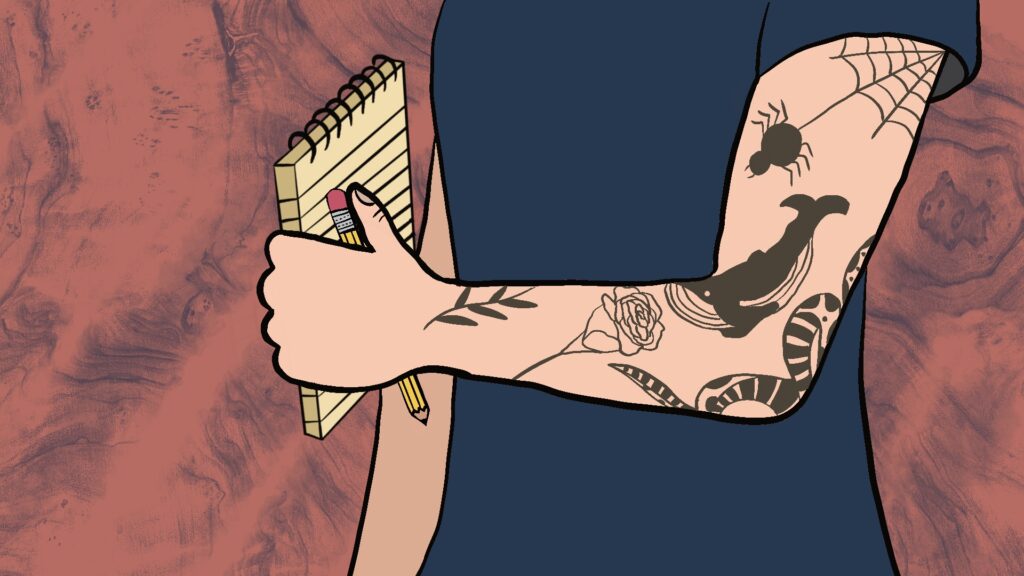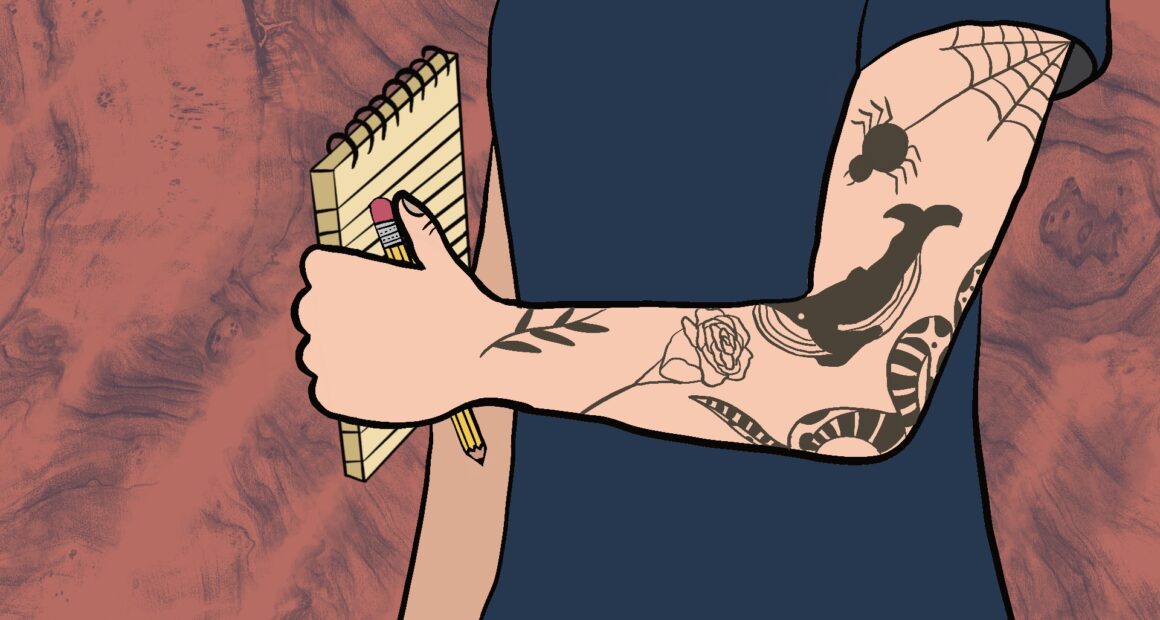The intersection of tattoos and identity in journalism

Tattoos are a deeply personal and visual expression of identity. They offer a window into who someone is—their passions, values, memories, and interests, all etched into their skin. In the same way, journalist’s stories provide insight into their worldview—how they process ideas, what compels them to tell certain stories, and ultimately, what drives them as storytellers.
That’s what makes it especially fascinating when journalists turn their own narratives into ink. Tattoos become more than body art; they’re an extension of the stories they tell. It’s a unique intersection of personal and professional storytelling—written both on the page and on the body.
“When I first started getting tattoos as a teenager, I was set on them needing to have a significant meaning,” says Breanna Schnurr, a freelance journalist based in Toronto, Ontario. Now 25, their perspective has shifted. For Schnurr, tattoos have become “less an expression of creativity and more that I just want to have things I like on my body that look cool.”
For others, ink holds profound meaning, often being tied to cherished memories or defining moments. Tattoos serve as permanent reminders of life’s pivotal chapters. Andie Mollins, a journalist based in Williams Lake, British Columbia, carries a piece of her personal journey on her skin: a tattoo of Le Petit Prince, the beloved character from the classic French children’s book.
“I never thought I could be a journalist,” Mollins says. Her tattoo reflects the challenges she has overcome in her life, including teenage anxiety which led her to believe she could never become a journalist. “Le Petit Prince embodies that whole experience, it reminds me of what I can do, and to enjoy the important moments in my life.”
Then there are those who want a tattoo but, for various reasons, can’t get one—at least not yet.
“If I’m going to have to look at it for the rest of my life,” says Dan Brown, a journalism instructor at Western University and veteran of the industry, “it’s got to be something that I’m happy with and meaningful to me.”
Brown has spent years contemplating his first tattoo and knows exactly what he wants: the words “who, what, where, when, how and why,” in an old typewriter font. “I’ve dedicated my life to answering these questions,” he says. “They’re the fundamentals.”
For now it remains an idea rather than a reality. Multiple medical conditions mandate him to be on blood thinners at all times, ruling out getting tattoos completely. Still, he remains unwaveringly optimistic it will happen someday.
“I haven’t fully answered how I would do it, but I do want this to be a part of me,” Brown says. His enthusiasm speaks to the lasting power of tattoos as a personal expression. They’re something worth waiting for.
Whether imbued with profound meaning or chosen for aesthetics, tattoos allow journalists like Brown, Mollins, and Schnurr to wear their stories in a way that feels authentic. The same impulse that drives their storytelling, to share, interpret, and connect, also drives them to ink their experiences onto their skin.
Tattoos are more than just marks on the body—they’re narratives made visible, proof that stories don’t just live on the page. Sometimes, they live within us. and clarity.
About the author
Owen is in the final year of his Bachelor of Journalism. He has previously written album reviews for Met Radio and is a social media coordinator for Oliver and Bonacini Hospitality. Interested in the business side of the masthead, he is looking forward to the challenges that come with stirring up engagement as well as revenue for The Review of Journalism. Outside of this, he works as a waiter and enjoys watching sports, hiking and playing soccer.


